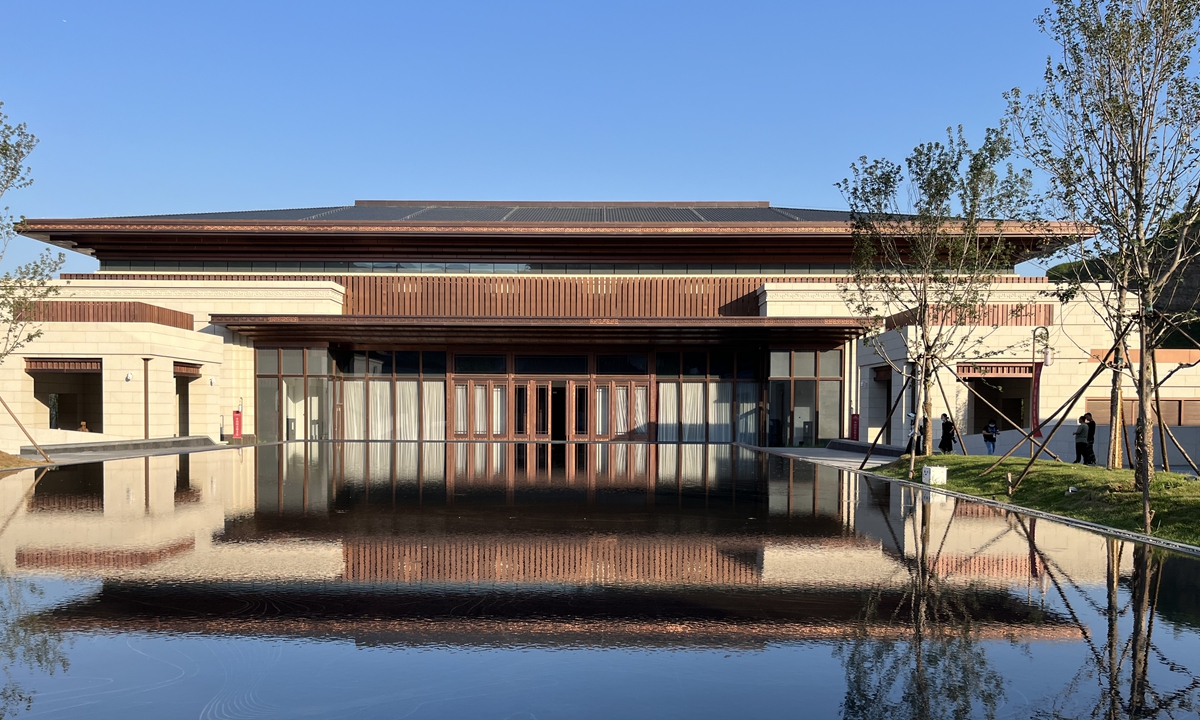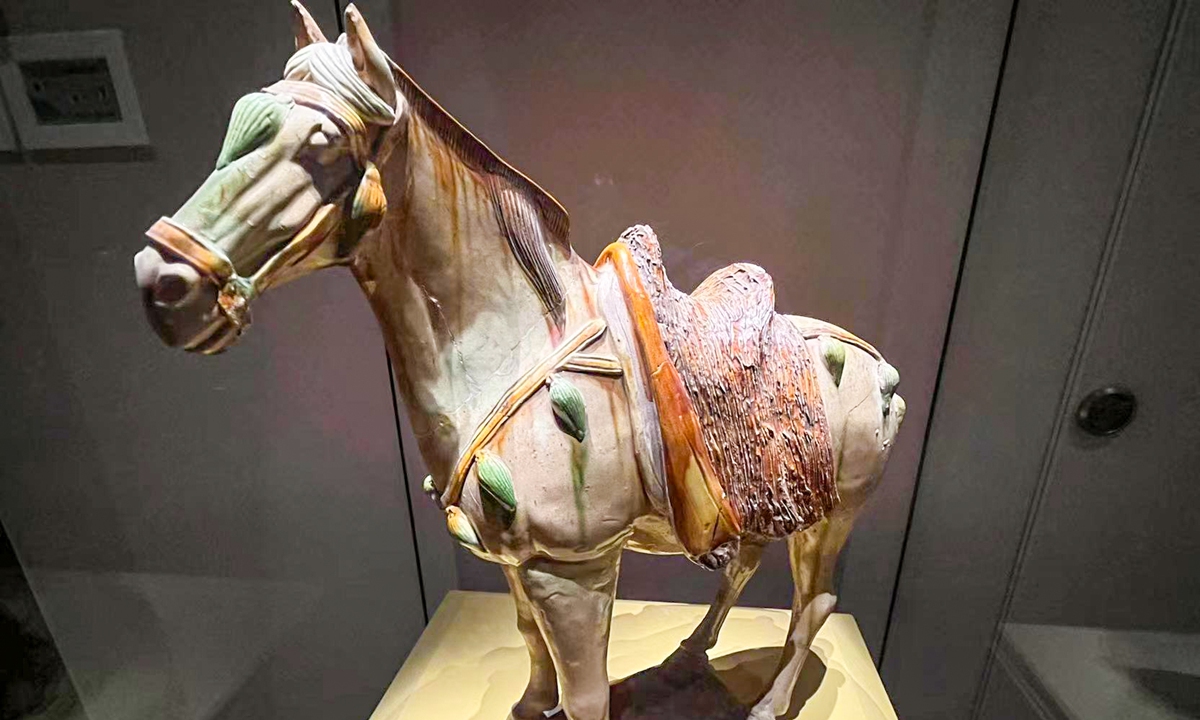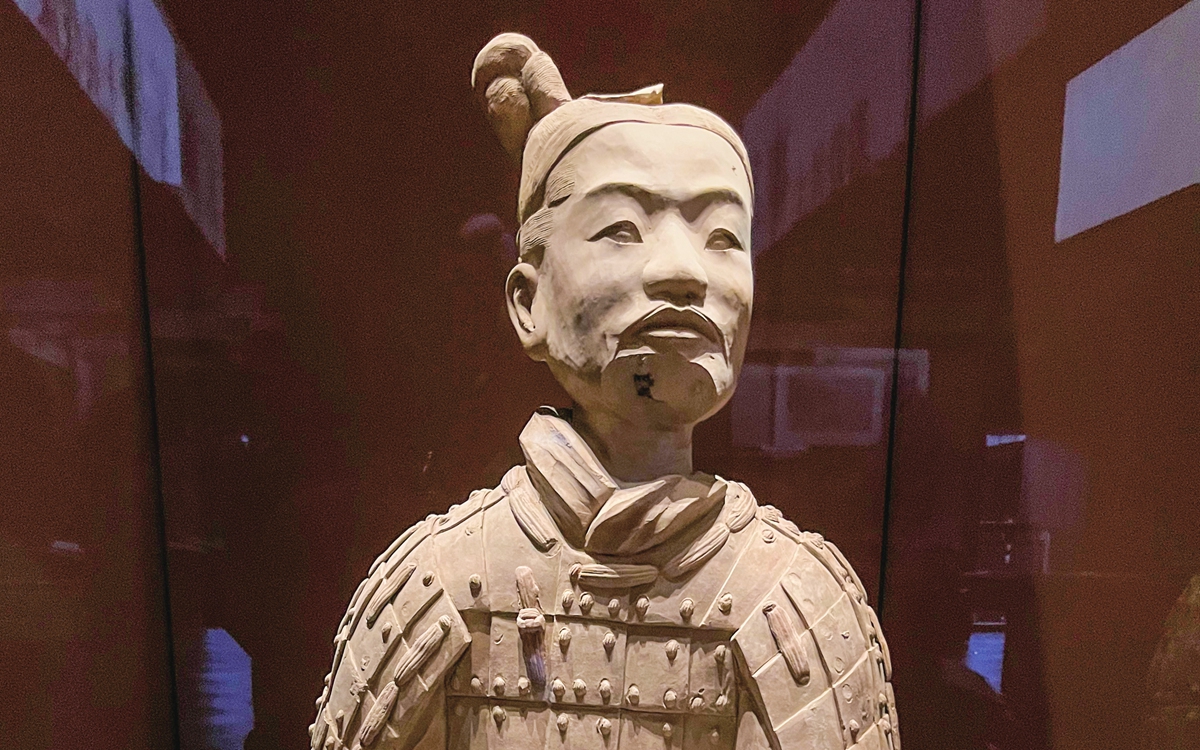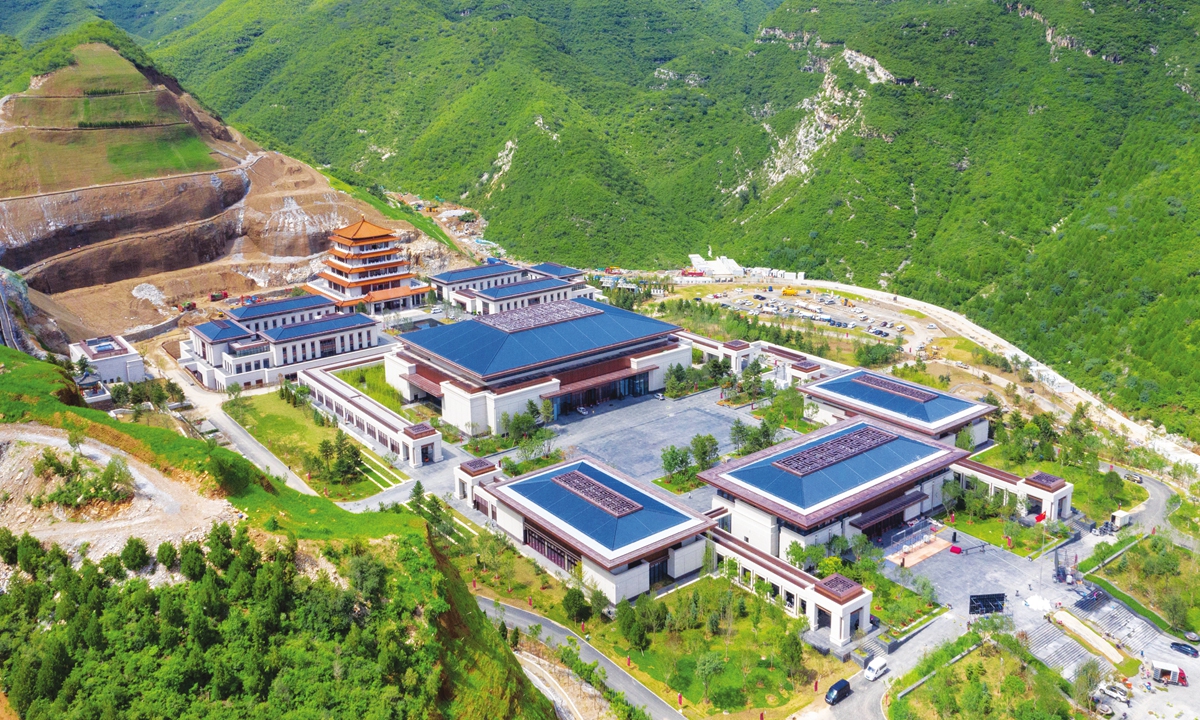Editor's Note:
Publications and cultural articles preserve and transmit traditional Chinese culture, symbolizing and testifying to the splendor of Chinese civilization since its ancient beginnings. As one of the first visitors, the Global Times on Thursday visited the Beijing headquarters of the National Archives of Publications and Culture, which encompasses in its vast collection millions of items that have witnessed China's ancient and modern eras.

Headquarters of the National Archives of Publications and Culture in Beijing Photo: Xu Liuliu/Global Times
After three years of construction, the National Archives of Publications and Culture, China's latest project to preserve its bibliographic resources, finally opened on July 30. The headquarters in Beijing and three branches in Xi'an in Northwest China's Shaanxi Province, Hangzhou in East China's Zhejiang Province and Guangzhou in South China's Guangdong Province are responsible for inheriting and preserving the country's vast bibliographic resources and cultural relics that record China's more than 5,000-year long civilization history.
Described as a cultural "seed bank" that records China's glorious culture and the wisdom of its people, the archives contain more than 16 million copies of historical texts and printed materials. What kind of resources are eligible to enter the collection? What exhibitions can people view when visiting the archives?
Let us explore the answers to these questions below.
From quarry to treasure houseLocated at the foot of the Yanshan Mountains north of Beijing, the archives' headquarters hosts more than 16 million copies of historical texts and tens of thousands of exhibits across 10 major categories.
The headquarters were originally an abandoned quarry surrounded by mountains on three sides. The main building stands out from the natural scenery and the open blue sky above while also seeming to be a part of it all.
Walking into the Beijing headquarters is like walking into a traditional Chinese garden, where you can see the unique style and charm of Chinese culture everywhere. Buildings in various styles such as pavilions hide among the landscape, demonstrating the traditional Chinese concept of storing treasures deep among famous mountains to pass on to later generations.

A tri-color glazed ceramic horse from the Tang Dynasty (618-907) Photo: Xu Liuliu/Global Times
The historical development of China and the evolution of Chinese civilization are the main themes of the main exhibition at the Beijing headquarters, with cultural relics such as stamps, ancient currency, and Terracotta Warriors numbering among the many exhibits that can be seen.
In a hall introducing bookmaking, a variety of written works across a diverse set of mediums are on display. Chinese characters once cast on ancient bronzes are simple yet solemn, calligraphy written on bamboo slips and paintings on silk have a graceful sophistication, while hand-copied and printed books are both refined and steadfast.
Some of the items in the collection are truly one of a kind as they are the only existing copy remaining in the world.
The permanent exhibition
Inception of Chinese Civilization features cultural treasures across 13 fields, covering Chinese civilization's origins, politics, economics, philosophy and literature, as well as military studies and cultural exchanges, providing a panoramic view of the birth, development and trajectory of traditional Chinese culture.
Some first-class relics are on display at the exhibition, including a 28-centimeter-long bronze dragon and a tri-color glazed ceramic horse from the Tang Dynasty (618-907).

A Terracotta Warrior Photo: Xu Liuliu/Global Times
Other exhibits not only demonstrate people's daily life such as how people managed businesses in ancient times but also show the extent of Chinese territories at various times through maps.
Besides cultural relics, visitors can also enjoy historical texts that review the development of the Chinese nation and some 2,000 copies of classic Marxist texts that display the glorious course of the Sinicization of Marxism.
Not only exhibitionsThe National Archives of Publications and Culture is more than just a place for exhibitions. The headquarters and three branches boast a vast collection of significant works.
For example, the
Siku Quanshu, also known as the
Complete Library in Four Sections, was the largest compilation of texts in pre-modern China. The collection contains an annotated catalogue of 10,680 titles along with compendiums of 3,593 titles.
Due to the chaos of war, most original editions of the
Siku Quanshu have been lost. However, several copies of the encyclopedic work are now at the headquarters.
The three branches too have multiple sections that serve as exhibition halls, libraries and archives. The Guangzhou branch is home to around 2.65 million texts, while the Hangzhou complex has collected a total of 1 million important texts in various languages such as
The Communist Manifesto. The Xi'an branch is home to an estimated 2.09 million copies of historical texts and 160 terabytes of digital resources.
Zhang Yiwu, a professor at Peking University, told the Global Times that the project will have a major impact on the inheritance of Chinese culture and the preservation of the vast number of Chinese texts created since writing began in China.

Headquarters of the National Archives of Publications and Culture in Beijing Photo: VCG







